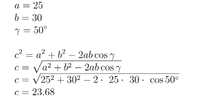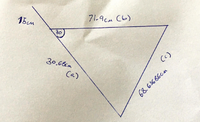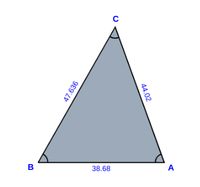amathproblemthatneedsolve
Junior Member
- Joined
- May 12, 2019
- Messages
- 189
A student is talented in furniture maker and has decided to build a bike frame out of wood. The student likes this design they found online, but instead of curves on the frame, the student will use straight pieces of wood. As the student intends to use a wooden bike to demonstrate some woodworking skills and promote his business, they will place a triangular sign inside the frame. The sign must have an area of at least 800 cm2. the student has taken some measurements from the old steel road bike and will use these when they create his new wooden masterpiece.
1. Find other crucial dimensions.
(you are expected to demonstrate the use of the sine rule, the cosine rule and the area of a triangle rule.)
1. Find other crucial dimensions.
(you are expected to demonstrate the use of the sine rule, the cosine rule and the area of a triangle rule.)




